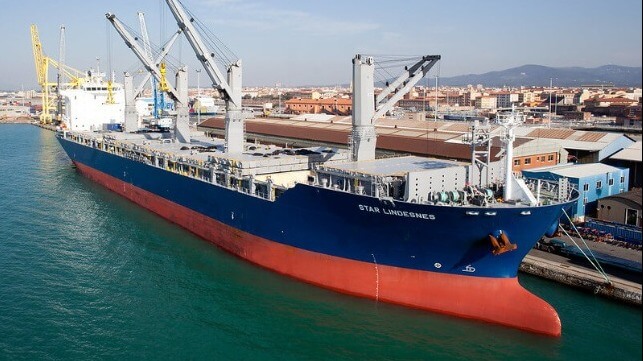Feasibility Study on Retrofitting Ammonia for Deep-Sea Bulkers

A new project is getting underway in Norway focusing on the challenges and feasibility of retrofitting existing vessels to operate on ammonia. The project is the latest in a series of initiatives launched by the Green Shipping Imitative, a public-private partnership supported by the Norwegian government and involving industry leaders from across the maritime sector.
While ammonia has been spotlighted as one of the more promising future fuels within shipping, Grieg Maritime Group which is leading the study points out that there are several uncertainties on how well it will work for deep-sea shipping. Further, they highlight that most of the current efforts focus on newbuilds, while they will conduct the feasibility study specifically focusing on Grieg’s eight-year-old L-class open hatch bulkers. Introduced between 2012 and 2014, the 10 bulkers are 50,761 dwt vessels each measuring 669 feet in length and powered by a convention MAN diesel engine.
“If the shipping world is going to achieve its decarbonizing goals, we need to include solutions for the existing fleet and actively and practically address the challenges,“ says Atle Sommer, Head of Grieg Star. “We believe in ammonia, so we will investigate how to implement it on board a specific vessel type in one particular trans-Atlantic route with the whole value chain involved. Emission reductions matter the most in deep-sea shipping, and through this pilot, we will be a part of the solution.”
The pilot will include evaluating the business case for green ammonia fuel and whether green ammonia is viable as a fuel for deep-sea shipping. The partners will explore commercial, technical, infrastructure, and financial workstreams. The study aims to produce a final report, and its key findings will be shared with the rest of the business on the findings as they relate to the retrofitting of existing ships.
Grieg will lead the pilot with DNV serving as the pilot facilitator. In addition, partners from across the value chain, from cargo owners to shippers to vessel owners, technology companies, insurers, and others will participate in the study.

that matters most
Get the latest maritime news delivered to your inbox daily.
G2 Ocean is also participating in this study contributing their knowledge in the commercial aspects of shipping as the commercial operators of Grieg's vessels. The study will also focus on the Atlantic as a possible trade route for the retrofitted vessel. Suzano Papel e Celulose, a Brazilian pulp and paper company, which ships large amounts of their paper and pulp products between Europe, the Gulf of Mexico, and Brazil, will be participating in the project.
The Green Shipping Program is bringing more than 100 different players in the Norwegian maritime cluster together with the common goal of establishing the world’s most efficient and environmentally friendly shipping. The program started in 2015, focusing on Norwegian coastal shipping, and more recently expanded to also focus on deep-sea shipping. The program has initiated over 30 green pilot projects in its role to facilitate dialogue and collaboration between all stakeholders in the shipping industry.
